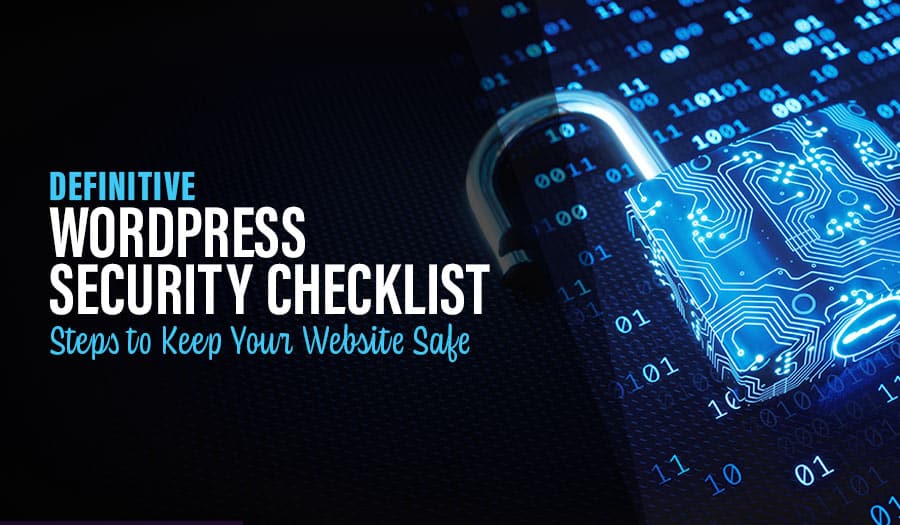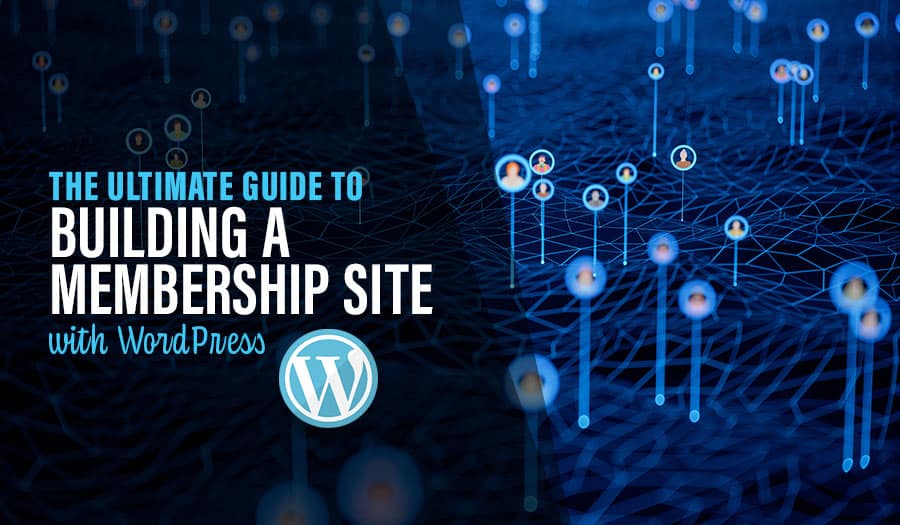Welcome to a proactive approach to securing your WordPress site. By following our focused “WordPress security checklist to keep your website safe,” you’ll learn the essential steps to keep your website safe from threats and vulnerabilities. Get ready for concise, step-by-step guidance, providing not just insights but actionable security measures you can implement immediately.
Key Takeaways
- Maintaining WordPress security is crucial for protecting against hackers, ensuring the integrity of sensitive data, and maintaining site credibility, particularly for sites handling extensive customer information.
- Key security steps include keeping WordPress updated, using strong passwords and usernames, enabling two-factor authentication, regularly backing up the site, and using a reputable web host equipped with essential security features.
- For comprehensive protection, Advanced WordPress security measures, such as changing the default admin URL, disabling XML-RPC, implementing Role-Based Access Control (RBAC), and conducting regular audits of user roles, are necessary.
Why Your WordPress Website Security Matters
The significance of security for WordPress lies in its ability to:
- Guard websites against hackers and malware
- Ensure the safety of sensitive data and the integrity of the site
- Fend off threats, avoid data loss, and secure customers’ personal and financial details
Think of your WordPress website as a fortress. It’s not just walls and towers; it’s home to precious treasures- your data. By safeguarding Website security, you can protect your website and its valuable information.
This is particularly crucial for enterprise-level projects that handle a large volume of sensitive customer data.
In addition, by adopting effective Website security measures, you can:
- Avoid content tampering
- Prevent data theft
- Uphold your website’s credibility
- Sustain customer trust
Imagine the damage to your reputation if sensitive customer data were to fall into the wrong hands. It’s not a scenario any business would want to face.
Moreover, compliance with WordPress site security protocols is indispensable for meeting regulatory standards. This protects user data and can help you avoid potential legal penalties. Hence, following our all-inclusive WordPress website security checklist goes beyond just securing your site- it’s about safeguarding your business.
Essential WordPress Security Checklist
Securing your WordPress site involves several steps, each playing an integral role in maintaining its security. Here are some key steps to follow:
- Keep your WordPress core, themes, and wordpress plugins updated.
- Choose a reputable web host.
- Implement strong passwords.
- Use a security plugin to monitor and protect your site.
- Enable two-factor authentication.
- Regularly backup your site.
- Limit login attempts.
- Use a secure connection (HTTPS).
- Remove unnecessary wordpress plugins and themes.
- Monitor your site for suspicious activity.
By following these steps, you can fortify your defences and reduce the risk of security breaches.
In the subsequent sections, we’ll thoroughly examine each of these steps, discussing their importance, implementation, and how they can help in mitigating potential risks. So, whether you’re a novice or a seasoned WordPress user, this ultimate WordPress security checklist will provide valuable insights to help you secure your site.
Keep Your WordPress Core, Themes, and Plugins Updated
In the WordPress ecosystem, updates serve as your initial line of defence against security vulnerabilities. Keeping your WordPress core, themes, and plugins up-to-date is not just an option; it’s a necessity. Regular updates do more than just patch potential security issues and loopholes. They also improve your site’s performance and ensure better compatibility between your WordPress core, themes, and plugins.
You might be wondering, “What if I forget to update?”. Well, that’s where automatic updates come into play. They offer a convenient way to maintain an up-to-date site. However, manual updates can be beneficial for precise version control or when automatic updates aren’t successful.
Remember, your fortress is as strong as its weakest link. So, keep your WordPress updated and maintain your site’s security.
Choose a Reputable Web Host
Consider a web host as your fortress’s foundation. It’s what your WordPress site is built on, and hence, it’s essential to choose a reputable web host. Reliable web hosts offer essential security features such as web application firewalls and malware scanners, which provide a secure environment for your WordPress website.
Moreover, robust web hosting services offer the following features for WordPress site security:
- SSL certificates, which enable HTTPS and encrypt data transfers
- Network monitoring to detect and prevent any unauthorized access or suspicious activity
- DDoS protection to mitigate and prevent distributed denial-of-service attacks
These features not only enhance the security of your website but also serve as a marker of trust for your website visitors.
When choosing a web host, make sure to select one with a strong passion for security, updated servers, proactive security protocols, and a commitment to regular backups and site restorations.
Implement Strong Passwords and Usernames
Similar to a fortress requiring a secure entrance, your WordPress site necessitates robust passwords and usernames. They are your first line of defence against unauthorized access and brute force attacks, which are common tactics used to compromise WordPress admin areas.
A steadfast password in WordPress includes a mix of at least eight characters with letters, numbers, and special symbols, regularly renewed to ensure account security. Password managers like LastPass and 1Password can aid in generating and managing such complex credentials.
After creating a new WordPress admin username, it is recommended that the previous admin account be eliminated to tighten security measures. In the event of a security breach, it is vital to change passwords immediately, and WordPress offers features for secure password generation within the user profile settings.
Enable Two-Factor Authentication (2FA)
2FA can be likened to a guard at your fortress gate, verifying the identity of each entrant. It significantly enhances security by requiring a second form of verification in addition to the password. In WordPress, 2FA functions as a security measure that makes it nearly impossible for attackers to gain access by simply guessing login credentials.
Plugins like Wordfence Login Security and MiniOrange 2FA are recommended for enabling 2FA and ensuring multifactor authentication is implemented effectively. It’s advisable to select a 2FA plugin that is frequently updated and reviewed positively by users, and accounts for high-level privileges requiring robust authentication.
Regularly Backup Your Website
Envision a scenario where your fortress is attacked, and you can restore it with a single command – that’s the power of regular backups for your WordPress site. They are essential to prevent data loss and enable straightforward site restoration.
Automated backup solutions like the Jetpack VaultPress Backup plugin can save changes in real-time, offering convenience and ensuring no data is omitted. For enterprise WordPress sites, incremental real-time backups are ideal, capturing every single change as it happens.
Backups are a critical element of website security, providing a recovery option in the event of hacking incidents or errors during advanced security implementations.
Use a Web Application Firewall (WAF)
A Web Application Firewall (WAF) can be compared to your fortress’s watchtower. It scans all incoming traffic and blocks malicious requests, thereby protecting your WordPress website from common threats and reducing the chances of successful cyber attacks.
Plugins like Jetpack Security can be used to configure the WAF with preset rules, enable the blocking of specific IP addresses, and facilitate the growth of the threat database through shared activity data. Using a WAF service like Cloudflare or Sucuri, administrators can protect the WordPress admin page from unauthorized IP addresses and brute force attacks by setting up URL lockdowns and path blacklists.
The implementation of a WAF, especially when combined with SSL, can significantly strengthen your website’s overall security framework.
Install a WordPress Security Plugin
Security plugins act as your fortress’s sentinels, constantly vigilant for potential threats. They record events on your WordPress site and search for suspicious activity. These security tools assist in identifying potential vulnerabilities, making it crucial to use a wordpress plugin that stays up to date with the latest security threats. Some popular security plugins for WordPress include:
- Wordfence
- Sucuri Security
- iThemes Security
- All In One WP Security & Firewall
By installing and configuring one of these plugins, you can enhance the security of your WordPress site and protect it from potential attacks.
Installing a trusted security plugin is recommended to monitor and safeguard your WordPress site effectively. A reputable security plugin provides additional protection beyond standard WordPress features, including stronger monitoring and defensive measures against threats.
Limit Login Attempts to your wordpress admin dashboard and Monitor User Activity
Restricting login attempts and monitoring user activity can be likened to maintaining a stringent guest list at your fortress’s gate. Using a wordpress plugin like Jetpack to limit login attempts enhances WordPress security and helps prevent unauthorized access by reducing the chances of a successful brute force attack.
Monitoring user activity using plugins like Jetpack Security helps quickly identify any unauthorized changes, maintain an activity log, and enable the attribution of changes to specific users. In addition, plugins like Inactive Logout can automate the process of logging out idle wordpress users, improving security by setting specific idle timeout periods.
Harden File Permissions and Disable File Editing
Strengthening file permissions and disabling file editing equates to installing locks on the doors within your fortress. They regulate who can read, write, and execute files, thereby preventing unauthorized access and securing website files and folders against potential intruders. One effective way to enhance security is to disable php file execution in certain directories.
Disabling file editing in WordPress helps prevent unauthorized access to core files and blocks potential malicious code changes. After disabling file editing, using Secure File Transfer Protocol (SFTP) to edit files maintains website security by providing an encrypted connection that protects data from unauthorized access during transfer.
Secure Your wp-config.php File
The PHP file, wp-config.php, akin to your fortress’s treasury, hold sensitive information about your site’s database configuration. To secure this file, implementing .htaccess rules can effectively block unauthorized access.
Editing the .htaccess file to include specific code can prevent all IP addresses from accessing wp-config.php, enhancing its security. In addition to .htaccess rules, limiting SFTP access to the wp-config.php file is an important security step, ensuring only administrators and required personnel can interact with it.
Move to SSL/HTTPS
Transitioning to SSL/HTTPS equates to affixing a seal on your fortress’s gate, indicative of its security. Enabling SSL/HTTPS on your WordPress site is crucial for encrypting data and ensuring a WordPress site’s secure transfer of sensitive information between the user’s browser and the server.
Websites with SSL/HTTPS are more trusted by visitors, as indicated by security indicators like padlock icons, which help improve your site’s credibility.
Remove Unused Plugins and Themes
Eliminating unused plugins and themes can be compared to de-cluttering your fortress. It’s essential to reduce security vulnerabilities and maintain site performance.
Hackers can exploit outdated plugins and themes to gain access to websites. Therefore, deleting inactive software from WordPress helps harden site security against potential threats.
Advanced WordPress Security Techniques
Having covered the basics, let’s now delve into advanced WordPress security techniques. These are the high-level strategies that can further fortify your WordPress fortress. From changing default admin URLs to implementing Role-Based Access Control (RBAC), each technique adds an additional layer of security to your site.
In the forthcoming sections, we’ll investigate each of these techniques meticulously. We’ll discuss why they’re important, how you can implement them, and the potential risks you can mitigate by doing so. So, whether you’re a novice or a seasoned WordPress user, these advanced security techniques will provide valuable insights to help you secure your site.
Change Default Admin URL and Login Page
Modifying the default admin URL and login page can be likened to altering the location of your fortress gate. It’s crucial to protect against unauthorized access attempts.
Altering the default admin URL and login page can thwart automated attacks by making the admin interface harder for bots to find and reducing the effectiveness of scripts targeting standard pages. The WordPress admin URL wordpress login page can be customized using plugins or by technical modifications to server files such as ‘.htaccess’.
Plugins like ‘WPS Hide Login’ or ‘Custom Login URL’ provide an easy way to change the default WordPress login URL from the admin panel, ensuring a more secure WordPress login experience.
Disable XML-RPC and Directory Browsing
Deactivating XML-RPC and directory browsing can be equated to sealing off hidden passages in your fortress. They enhance security by preventing loopholes that could be exploited for brute force attacks and by preventing unauthorized access to server files.
Plugins or the website’s .htaccess file can be used to disable the XML-RPC function. Disabling XML-RPC also mitigates the risk of Distributed Denial of Service (DDoS) attacks through pingback features and strengthens overall site security.
Implement Role-Based Access Control (RBAC)
Role-Based Access Control (RBAC) is similar to delegating tasks to your fortress guards based on their roles. It restricts network access based on a person’s role within an organization, thereby minimizing the risk of unauthorized access to sensitive functions and data.
By defining user roles and capabilities, RBAC enhances WordPress security. It ensures that every user has access only to the information and functions they need to perform their role, thereby reducing the risk of unauthorized access.
Regularly Audit User Roles and Permissions
Regular audits of user roles and permissions can be compared to periodic checks of your fortress guards’ credentials. They are crucial for ongoing WordPress site security.
Role definitions and access controls should be reviewed and updated frequently to prevent security breaches. Consistent audits of roles and permissions preserve the relevance and effectiveness of the RBAC system, ensuring that your WordPress fortress remains secure.
Top WordPress Security Plugins
Security plugins serve as the elite guards of your WordPress fortress. They offer comprehensive protection, malware scanning, and firewall implementation. However, not all plugins are created equal. Some stand out for their robust capabilities and user-friendly interfaces.
From comprehensive scanners like MalCare and Wordfence to user-friendly interfaces like SecuPress, each wordpress plugin offers unique strengths. Some, like Jetpack, notify the website owner of malware and vulnerabilities, while others, like Defender Security, include malware scanning and modification detection with their firewall protection.
However, it’s important to be aware of their limitations as well. Not all plugins offer comprehensive malware scanning or cleanup capabilities. Some may be complex to set up, while others may hamper site performance. Therefore, choosing the right security plugin for your WordPress site requires careful consideration and research.
What to Do If Your Website Is Hacked
In the unfortunate event of your WordPress fortress being breached and your site getting hacked, prompt action is crucial to minimize damage and restore site security. The first step is to put your WordPress site into maintenance mode, preventing users from accessing the compromised site during recovery.
Next, search for and remove malware and any unrecognized admin users. Delete infected files or replace them as recommended when your security plugin identifies malware in your WordPress site. Duplicator Pro aids in the quick restoration of a site after a cyber-attack by using WordPress backups.
Remember, when it comes to storing backups:
- Storing backups on a personal computer is not advisable
- Use services like Google Drive or store backups in at least three different locations
- Relying solely on the hosting provider for backups is not safe; server compromises can render both the website and its backups useless.
Definitive WordPress Security Checklist: A Summary
We’ve journeyed through the definitive WordPress security checklist, exploring essential steps and advanced techniques to keep your WordPress site safe. From the importance of regular updates and reliable web hosts to the benefits of 2FA and regular backups, each aspect plays a crucial role in maintaining the security of your WordPress fortress.
But remember, securing your WordPress site is not a one-time task; it requires ongoing vigilance and regular updates. With the right security measures in place, you can ensure that your WordPress site remains secure, protecting your data, maintaining your reputation, and providing a safe online space for your visitors.
Frequently Asked Questions
What is the importance of keeping the WordPress core, themes, and plugins updated?
Keeping the WordPress core, themes, and plugins updated is important for maintaining security, avoiding vulnerabilities, and improving site performance and compatibility. Regular updates help patch potential security loopholes.
How can a reputable web host enhance WordPress security?
A reputable web host can enhance WordPress security by offering essential security features like web application firewalls, malware scanners, and SSL certificates to enable HTTPS and encrypt data transfers. These features help to safeguard your WordPress site from potential security threats effectively.
What role does Two-Factor Authentication (2FA) play in WordPress security?
2FA plays a crucial role in WordPress security by providing an additional layer of verification, making it extremely difficult for unauthorized users to access the website.
Why is it important to regularly audit user roles and permissions in WordPress?
Regularly auditing user roles and permissions in WordPress is important to maintain ongoing site security by ensuring that role definitions and access controls are updated frequently, preventing security breaches.
What steps should I take if my WordPress site is hacked?
If your WordPress site is hacked, act quickly to mitigate damage and restore site security. Put your site into maintenance mode, remove malware and unrecognized admin users, delete infected files or replace them, and restore your site using WordPress backups.
Take your business to the next level with a Pixel Fish Website.
Check out some of our latest Website Design projects.
View some case studies of our website design work:
High Risk Training Academy
Friendly Mobility
Armidale Catholic Schools
HR Constructions
Further Information
Why you should use Elementor for your new WordPress Website
The Vital Role of Mobile Website Design
Top 3 Ways Website Design Impacts SEO For Your Business
Maintaining Your WordPress Site: What You Need to Know
Business Web Design Checklist for a Perfect Business Website



